This project is about 3D scanning and modelling urban elements close to assigned metro stations.
The metro station I choose to study is Fontana, placed in the neighborhood of Gracia, Barcelona. It is a small metro station, across the Carrer Gran De Gracia. Fontana does not share the same urban image with the other stations, as the ticket configuration is at the same level with the street. There are no stairs or specific boundaries for the station while the entrance and the exit to and from the station are exactly the same, defined by double doors. There is neither open public space around it and this station seems more as a typical building of Gracia than a metro station. The sights for its identity are the typical metro sign and a large canopy placed over the doors.
It was hard to find an urban element that was unique and caracteristic, as the wider area shares the same elements with the public space in Barcelona while the station is in a central point of Gracia. That’s the reason I chose to 3D map a common but temporal urban element which, in my opinion, few people are aware of. The urban element that caught my attention is the handcart of the street cleaners. It is a curved object, without any sharp edges but quite small. It seems functional and easy to move it. More, it is clean, colored (white and blue) and it has no open parts so any smell or dirt could affect its “driver”.
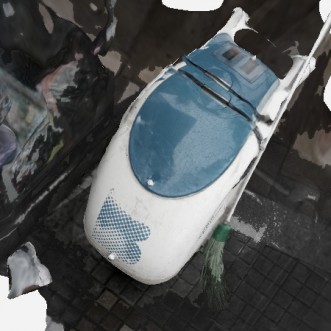
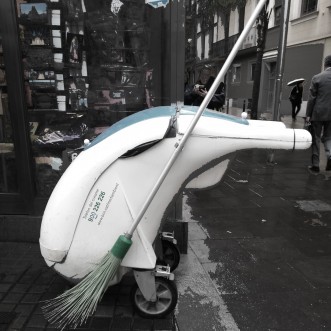
The procedure I followed to map this object was the same as indicated in class.
I downloaded the 123D Autodesk Scan Application and took photos with my mobile phone covering a 360o angle, in horizontal and vertical orientation. My photos were actually pretty good as the 3D model shaped almost perfect.
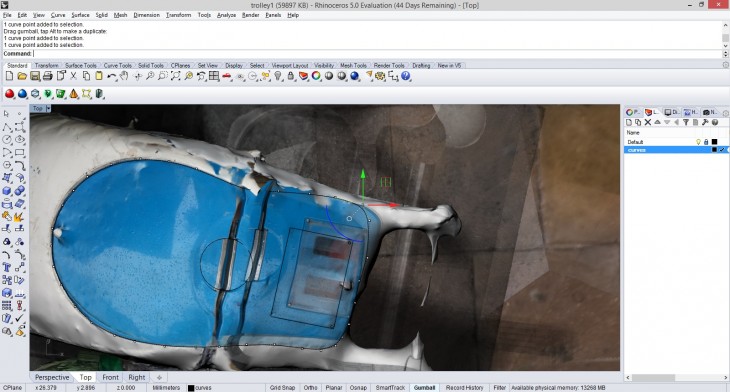
I imported the 3D shape in Rhinoceros and I started to identify sections and curves that could help me design it.
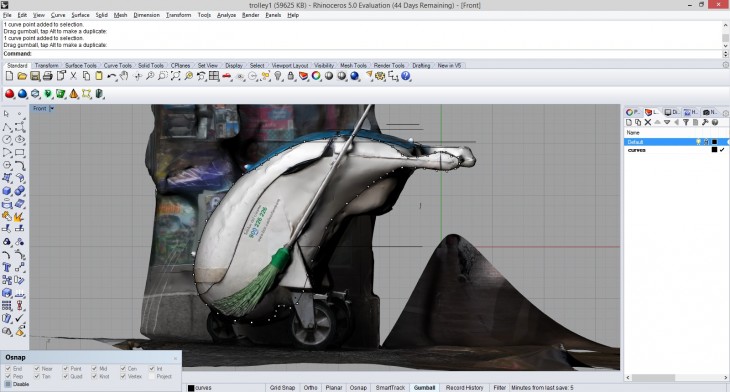
I created several sections using curves, polylines and shapes on which I created and extruded surfaces.
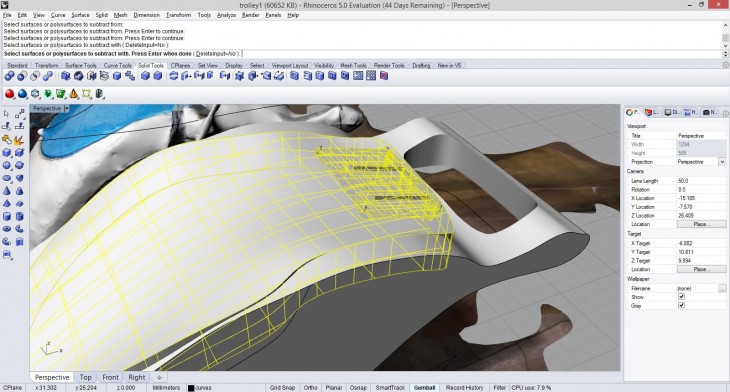
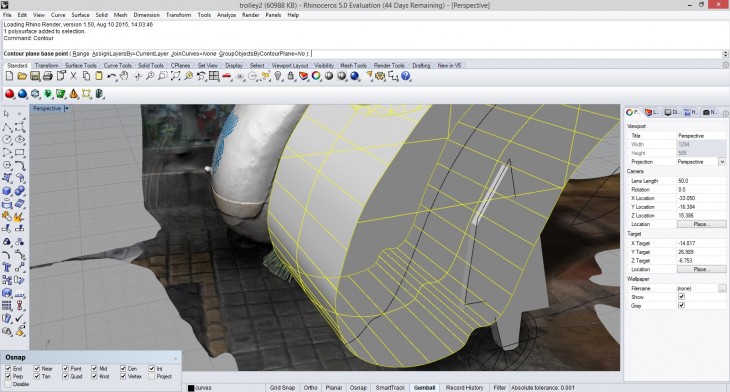
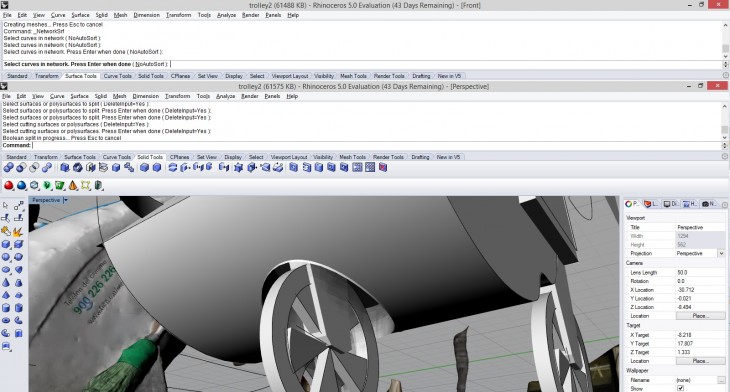
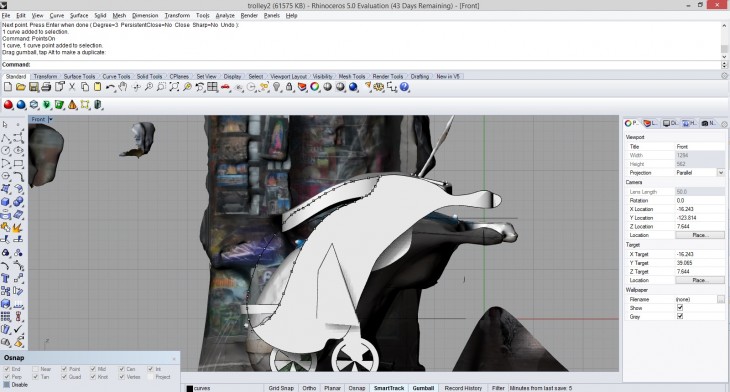
The difficulty I confronted was exactly this procedure: as the object is curved and smooth with secondary parts fully absorbed by the main shape, I found difficult to separate and find the appropriate curve/section so as to design its parts.
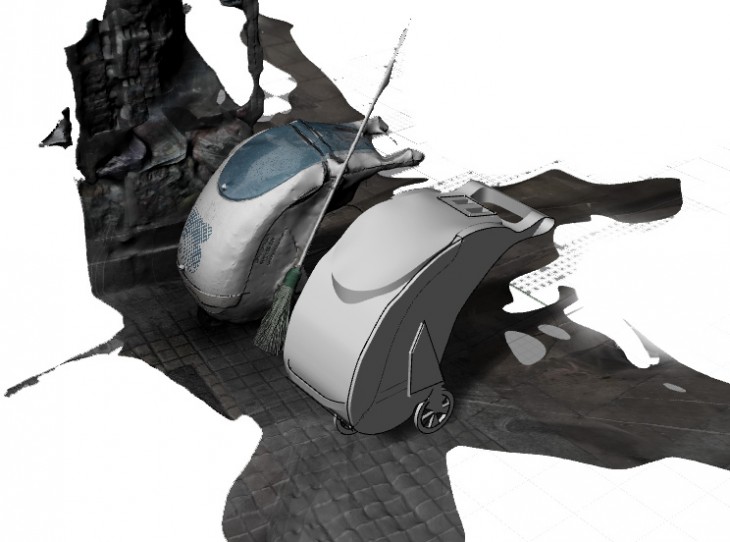
Procedural Modelling and Associativity: 123D catch-cleaning trolley is a project of IaaC, Institute for Advanced Architecture of Catalonia
developed at MAA01 in 2015-2016 by:
Student: Maria-Klairi Chartsia
Faculty: Luis E. Fraguada, Rodrigo Aguirre